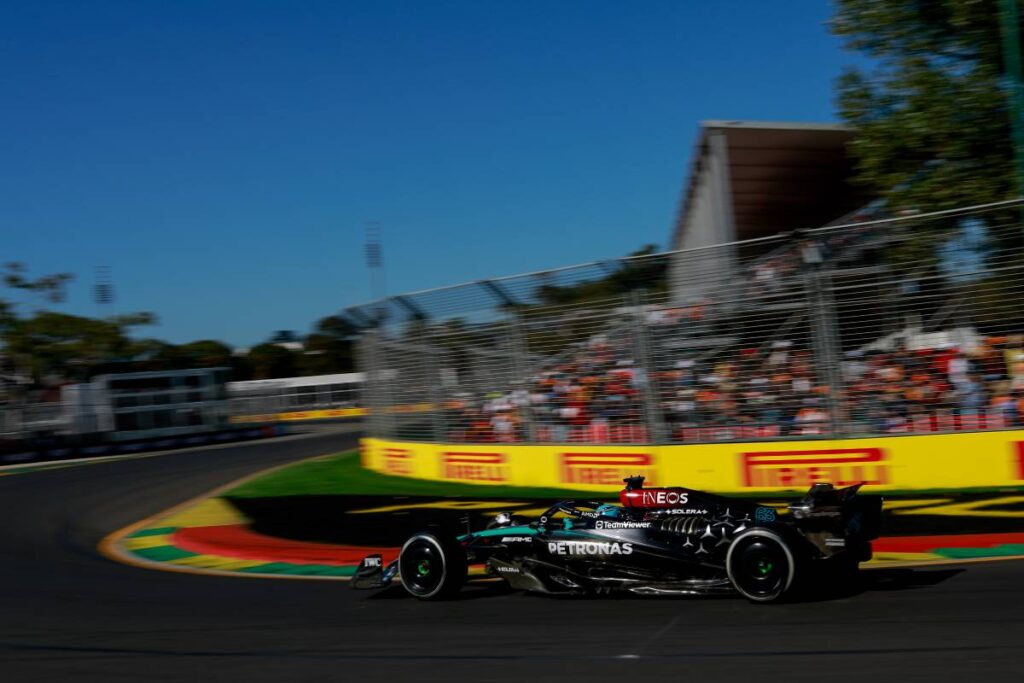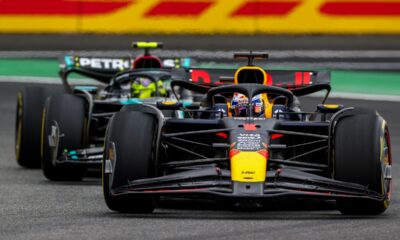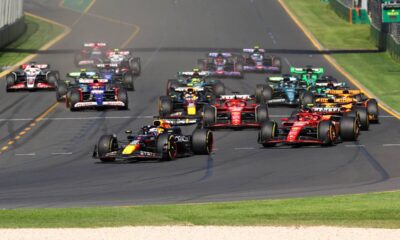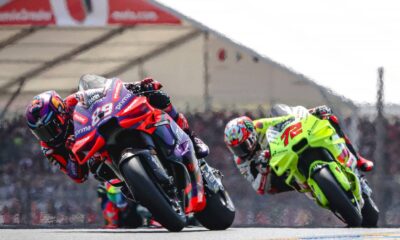Motorsport
COMMENTARY: Australian Alonso-Russell incident reveals both F1’s problems and hope for the future of racing
The break in the dominance of Red Bull, or rather Max Verstappen, came sooner this year than might have been expected. Thanks to a right rear brake that waved the Dutchman off just three laps into the Australian GP, the way was cleared for another victory for Carlos Sainz at the Red Bulls. In recent times, a relatively rare Ferrari double was completed by Charles Leclerc.

The break in the dominance of Red Bull, or rather Max Verstappen, came sooner this year than might have been expected. Thanks to a right rear brake that waved the Dutchman off just three laps into the Australian GP, the way was cleared for another victory for Carlos Sainz at the Red Bulls. In recent times, a relatively rare Ferrari double was completed by Charles Leclerc.
However, alongside this story, some of the attention focused on the penultimate lap incident between Fernando Alonso and George Russell, which went worst for the Briton. A crash that brought back memories of a similar situation at last year’s Singapore Grand Prix.
Although in this case the culprit was very easy to find. The incident from the recently concluded race divided the formula society into two camps. One side puts the blame back on Russell, saying that the Mercedes driver was caught out by the Spanish veteran on the very fast Turn 6.
Fans with the opposite opinion, however, after watching the telemetry from the Aston Martin car, instead blame Alonso and his erratic and unexpected approach when driving through this section.
However, instead of taking one side or the other (I partially agree with both opinions. As is the case in most similar situations – ed.), I intend to highlight in the following lines the causes that contributed to the whole event and the potentially favourable consequences that arise from the decision of the sports commissioners.
The threat of ever faster urban circuits like in Australia
The Australian circuit at Melbourne’s Albert Park has traditionally been one of the city circuits with a relatively high average speed. Yes, of course, tracks laid on public roads were once quite sparse compared to permanent circuits. Ten years ago, the F1 calendar featured four city circuits out of nineteen in total. And we could argue about how “urban” the Montreal track is.
However, the layouts at Montreal and Albert Park in particular had only a few fast sections. Whereas the Monaco and Singapore layouts were and are notoriously technical, twisty and slow. However, the circuit in Baku, Azerbaijan, took an interesting turn for the first time with its section around the historic city and a two-kilometre straight that twisted several times. It was followed, however, by a track whose shape I just rolled my eyes at after my first introduction to it.
Saudi Arabia’s Jeddah is the epitome of Formula One’s lust for more spectacle on normally dull, uninspiring and drab city tracks. Almost every corner here is immediately followed by another, often at speeds in excess of 300km/h, without the drivers being able to properly see where they are going.
Not to mention the near absence of ideal overtaking spots. It’s as if the circuits with their fast and agile passages don’t really help to increase the amount of wheel-to-wheel battles, which fans and their now high standards often demand after every grand prix.
It didn’t stop at Jeddah, however. Albert Park subsequently sped up several sections, including turn six, and cleared one of the possible overtaking sections. Miami and Las Vegas in the US also spare no wild passages, and the upcoming Madrid circuit took inspiration from that. The fact that Miami and Madrid, in particular, present themselves as hybrids between urban and permanent circuits doesn’t play much of a role here. I’m looking at you, concrete escape zones from white line to barrier..
F1 is going back to where it started. The sense of danger is once again the main instinct of the spectacle
The difficulties created by modern urban circuits are obvious from the factors mentioned above. Although Russell’s accident didn’t look terrible for the most part (the grass and gravel certainly helped). However, the Mercedes’ return to the track after bouncing off the tire wall must have startled everyone when looking at the replays. What is poor Russell, who experienced the whole situation live, to say?
Throughout F1’s history, the series has started on often extremely fast and therefore dangerous (as if F1 wasn’t a highly dangerous sport in its own right at the time) circuits à la Reims or Clermont-Ferrand. But occurring outside of metropolitan areas (outside of the traditional Monaco).
Then the queen of motorsport moved to the streets of the big cities closer to the people. However, perhaps from experience with just tracks like Reims, she rode on tight and narrow tracks. Case in point, F1’s early attempts to show up in the US. And finally, we are in an era of staying in the cities. We’re even coming to them more and more. But the intention to make the sport as spectacular as possible is turning urban tracks into real safety hazards. It’s the merry-go-round of life, isn’t it?
Arrivederci to ridiculous penalties for dangerous driving?
But now let’s move on to something more positive. Alonso’s drive, which earned him a pit lane penalty converted into a 20 second penalty, divided the entire fan community on the penultimate lap of the Australian Grand Prix. Some agree with the stewards’ verdict and their explanation of the situation based on telemetry of the Spaniard’s pass through the entrance to turn six.
Others, on the other hand, claim that the race directorate actively degraded the spirit of racing by punishing Alonso’s cunning strategy of setting up part of the circuit after turn six so that Russell would not get a chance to use the DRS overtaking manoeuvre into turn nine.
Whatever one’s view on this split, I personally see two major aspects to ponder in this matter. The first is that if Alonso had been penalised with the usual penalty of five or ten seconds until last year. The 42-year-old veteran would have lost no position at the finish of the Australian Grand Prix. Thus, in principle, nothing would have happened and I believe that this incident would not have become as controversial as it really was.
The second, however, revolves around the general level of the penalty on Alonso’s head. In their official statement, the race directorate mentions that they have decided to raise the bar on penalties for driver misconduct from ten seconds to a pit pass (or an adequate time penalty) for this year’s race.
I am extremely pleased that the stewards have started to take a much stronger approach to offences against the rules of the sport. Five or ten seconds, often for obvious and avoidable contact with another driver who ends up in the barrier, does not usually change the overall Grand Prix standings in the end. It used to be that even a minor racing infraction was punishable by at least a pit pass, if not a stop-go penalty or outright disqualification.
Harsher penalties can certainly not only mix up the final results of the grand prix more. But also make drivers race cleanly and with the utmost respect. Nor am I concerned that in some aspects F1 should return to a seemingly better past.
But not to punish legitimate racing with the competition in a comparable way to the ugly off-track banishment of the other driver. As Nikola Tsolov demonstrated in Formula 3 last weekend. At least this change in attitude will catch Tsolov’s followers out the way they are due – with a well-deserved ban from the start.
Source: F1 TV

-
Motorsport6 days ago
Jorge Martín is rewriting history! the 26-year-old Spaniard became the new MotoGP World Champion, Bagnaia succumbed despite his best efforts
-
Football6 hours ago
Manchester City blast. Tottenham blew it 4-0, defence on fire
-
Football11 hours ago
Chelsea consolidated third place. Enzo Fernández scored a goal and an assist to help Chelsea win at Leicester

















